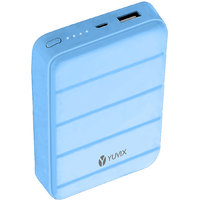how gas refrigerators work
A refrigeration cycle is the process of adding a substance to the inside of a closed system and then removing heat from the interior while maintaining that temperature."
Image source: https://www.amazon.com/
This article will answer many questions about how gas refrigerators work and even build up enough in-depth knowledge so that you are comfortable with answering most questions about gas refrigerator operation. With all this information, you'll be one step closer to becoming an ace appliance expert.
Image source: https://pinterest.com/
After reading this article, you'll also have no trouble understanding product specifications, which will help you compare products on the market and find something that suits your needs!
Image source: https://www.flipkart.com/
Here we go!
One way to explain how a refrigerator works is by saying it helps keep hot things cool. But, of course, how it works is more complicated than that.
Image source: https://www.reliancedigital.in/
Let's first see how a refrigerator normally works.
A common refrigerator consists of four main components:
Compressor:
The compressor is connected to a thermally activated switch that turns on the unit whenever the temperature inside the refrigerator falls below thirty degrees Fahrenheit. When the temperature rises above thirty degrees, the thermally activated switch senses this and turns off the refrigerator.
Image source: https://www.snapdeal.com/
In addition to sensing high and low temperatures, these switches can also sense when there is little or no airflow through the condenser coils (which are located at the back of your refrigerator).
Image source: https://www.shopclues.com/
The compressor basically "squishes" a gas, most commonly ammonia, into a liquid at a very low temperature. The gas then flows through a tube in to the refrigerator. This tube is connected to an expansion valve that allows the gas to enter and exit the refrigerator.
Image source: https://rtings.in/
The expansion valve will open or close based on temperature variations inside and outside of your refrigerator.
Image source: https://www.flipkart.com/
When entering your appliance, the ammonia (which is almost all condensed inside the refrigerator) passes through two coils at the back of your unit (or sometimes they are located near the bottom).
Image source: https://www.shopclues.com/
These coils are called condenser coils and they act like tiny radiators. They take away heat from inside your unit and transfer it to the air in your room, making it cooler.
Image source: https://www.amazon.com/
When the ammonia enters the compressor, it is compressed so that it can be stored inside your refrigerator. This compression happens because of the expansion valve, which allows more cold liquid to flow into your machine.
Image source: https://pinterest.com/
But as the gas leaves your unit, it is no longer very cold and needs to be warmed up as it comes in contact with the air in your room. For example, imagine if you had a container with ice cream inside of a refrigerator: after a while, the ice cream would become warm because it is constantly exposed to warmer air outside of the refrigerator.
Image source: https://www.flipkart.com/
This warm air (which is much warmer than outside air) comes from an auxiliary fan located near your compressor or on top of your refrigerator. This fan blows air around inside your refrigerator, releasing the heat that was acquired from the condenser coils.
Image source: https://www.reliancedigital.in/
This is why when you see a warm area in the back of a refrigerator, it's usually caused by an auxiliary fan. This is also why this fan will turn on and off intermittently as your refrigerator cycles on and off.
Image source: https://www.snapdeal.com/
In addition to the auxiliary fan, there is also a large vent at the bottom of your refrigerator that tends to be quite small (compared to other appliances).
Image source: https://furbicle.com/
This vent allows some cool air from inside your unit to exit into the room. This helps lower the temperature of air entering your refrigeration unit and aids in keeping food cold.











Comments
Post a Comment